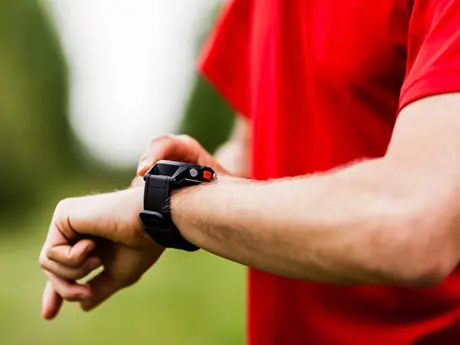
Power meters have become a mainstream training tool for cyclists over the past several years. Meanwhile, runners continue to rely on heart rate monitors as the only way to monitor training zones and effort.
But this could soon be changing.
Startups are already tinkering with technology to try to make it happen. If a startup does manage to bring a power meter designed for runners to market, would it be worth the investment? Here's what power measurement in running would mean and how it could help your running.
More: 5 Exercise That Improve Stability and Efficiency
How Would Power Data Be Measured?
Consider a flat, 10-mile running course. If you run with the same form, a pace of 6-, 7-, or 8-minute miles will burn the same number of calories. On a flat course and with consistent stride, how much energy you burn over a mile is constant. The only variable is how much energy you burn over time. More energy burned over time means you're creating more power.
When you create more power on a bike, it means you're going faster. That's not necessarily true in running because the force behind that power moves in two directions: vertically and horizontally. Only the horizontal component of your force makes you go faster. The vertical component makes you go higher. It doesn't contribute to forward motion. This is why running coaches teach runners to limit bouncing as much as possible. It's inefficient.
This is where power numbers for runners could be helpful.
More: 5 Elements of Chi Running
With a shoe-based system, you would want to have as low a power number as possible. Keep in mind that we said you burn the same number of calories over a distance as long as your stride remains constant. But if you adopt a more efficient stride, you would burn fewer calories. You would also tax your aerobic system less, which means more forward motion.
Efficiency in running means you either increase your horizontal power output or reduce your vertical power output. Power meters would give runners a means of measuring just how efficient their stride is, which could result in a huge boost in performance.
Consistency Over Hilly Terrain
A running-power system has benefits for hill training too. Research shows a link between heart rate increases and inclines. Because of this, you can reliably predict how fast you should run based on how fast you run on a track.
Professional runners often research a course's elevation profile in detail so that a pacing strategy can be developed to keep their heart rate from spiking on hills. For those of us with less time or intuition, a power meter could be set with limits and sound an alarm when our effort increases. This would help to improve pacing consistency over long distances.
More: Simple Drills to Improve Running Economy
The Shortfall
Power meters for runners would be a less exact measurement than it is for cyclists. Individual differences in gait and variations of body type would alter results more than they do in cycling.
We've all experienced a new course that takes us by surprise, or a moment where we lost attentiveness and noticed a fatigue-induced "slack" in our stride. What we haven't experienced is a warning that we're on the verge of going beyond our limits.
The possibility of a power meter to measure exactly when we've fallen out of form would make runners more aware of their efficiency and stride.
More: 7 Tweaks to Improve Your Triathlon Run
 Search for your next triathlon
Search for your next triathlon
About the Author










Discuss This Article